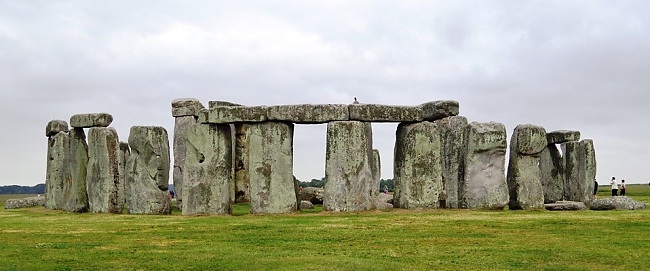
The conservationists have started the largest repair of Stonehenge in decades
 |
London – Conservationists today began repairing cracks and holes in the complex of menhirs and stone circles at Stonehenge in England. This will be one of the largest repairs in recent decades, the Reuters agency reported, citing the non-profit organization English Heritage, which is responsible for the management of the Neolithic monument.
The menhirs, which were placed in the stone circles between 3000 and 1600 BC, need to have the cracks caused by erosion and previous repairs smoothed over. Conservators revealed them using a laser scanner.
"Stonehenge is unique among stone circles due to its lintels and special joints used to secure them,” said curator Heather Sebire from English Heritage. "Four and a half thousand years of battering by wind and rain have created cracks and holes on the stone surface, and this crucial work will preserve the features that make Stonehenge so distinctive,” Sebire added.
Due to the work, scaffolding will be erected – the highest will reach a height of nine meters – so that the conservators can access the tops of the stones. The repairs are intended to prevent the existing cracks from enlarging. Conservators will also replace the cement mortar that was used in the repairs during the 1950s and 60s with lime mortar.
As part of the project, 71-year-old Richard Woodman-Bailey, who placed a coin under one of the giant stones in 1958, will return to the site. His father was leading the restoration work on the monument, which is listed as a UNESCO World Heritage Site. He will exchange it for a newly minted two-pound coin, English Heritage reported.
The English translation is powered by AI tool. Switch to Czech to view the original text source.
0 comments
add comment
Related articles
0
20.12.2024 | Stonehenge could have been created as a political monument, scientists claim
0
03.08.2018 | In the mystery-shrouded Stonehenge, even foreigners were buried
0
11.09.2014 | Stonehenge was surrounded by 17 other shrines, archaeologists found
0
10.03.2013 | Stonehenge, according to scientists, began as a cemetery for influential families
0
22.12.2011 | British scientists may have deciphered the mystery of the origin of the stones at Stonehenge
0
22.07.2010 | A further circular monument was discovered at Stonehenge
0
06.10.2009 | New discovery at Stonehenge strengthens the version of an ancient burial site
2
10.10.2008 | Stonehenge is probably older than previously thought
0
31.01.2007 | A village inhabited at the time of its creation was found near Stonehenge










